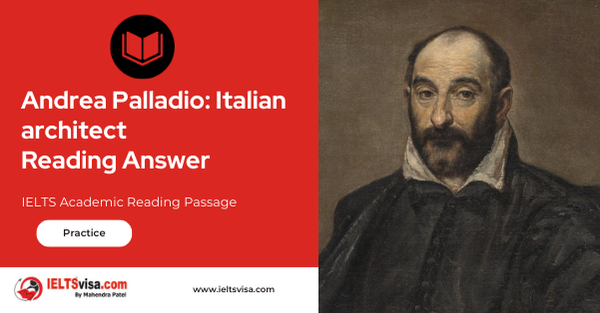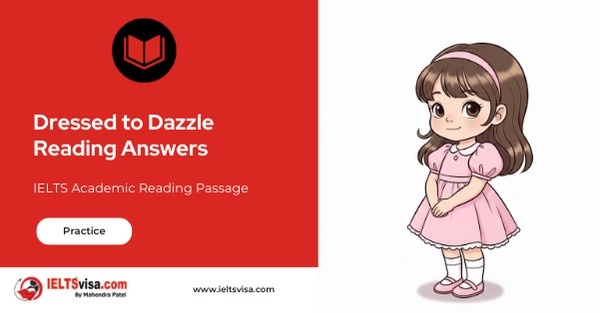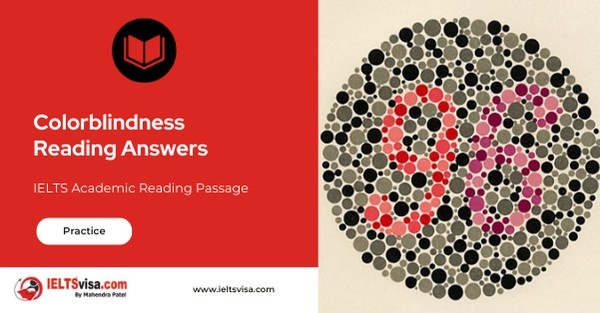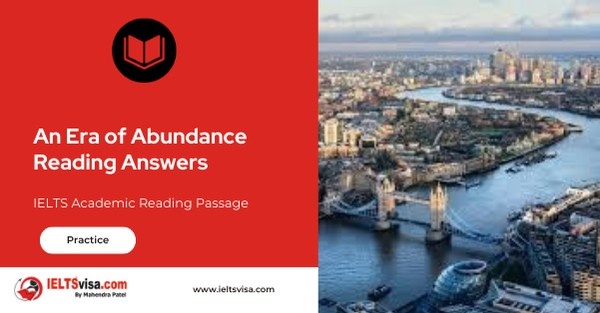Andrea Palladio: Italian Architect Reading Answer
IELTS Academic Reading Passage
A new exhibition celebrates Palladio’s architecture 500 years on
A
Vicenza is a pleasant, prosperous city in the Veneto, 60km west of Venice. Its grand families settled and farmed the area from the 16th century. But its principal claim to fame is Andrea Palladio, who is such an influential architect that a neoclassical style is known as Palladian. The city is a permanent exhibition of some of his finest buildings, and as he was born – in Padua, to be precise – 500 years ago, the International Centre for the Study of Palladio’s Architecture has an excellent excuse for mounting la grande Mostra, the big show
B
The exhibition has the special advantage of being held in one of Palladio’s buildings, Palazzo Barbaran da Porto. Its bold façade is a mixture of rustication and decoration set between two rows of elegant columns. On the second floor, the pediments are alternately curved or pointed, a Palladian trademark. The harmonious proportions of the atrium at the entrance lead through to a dramatic interior of fine fireplaces and painted ceilings. Palladio’s design is simple, clear and not over-crowded. The show has been organised on the same principles, according to Howard Burns, the architectural historian who co-curated it.
C
Palladio’s father was a miller who settled in Vicenza, where the young Andrea was apprenticed to a skilled stonemason. How did a humble miller’s son become a world-renowned architect? The answer in the exhibition is that, as a young man, Palladio excelled at carving decorative stonework on columns, doorways and fireplaces. He was plainly intelligent, and lucky enough to come across a rich patron, Gian Giorgio Trissino, a landowner and scholar, who organised his education, taking him to Rome in the 1540s, where he studied the masterpieces of classical Roman and Greek architecture and the work of other influential architects of the time, such as Donato Bramante and Raphael.
D
Burns argues that social mobility was also important. Entrepreneurs, prosperous from agriculture in the Veneto, commissioned the promising local architect to design their country villas and their urban mansions. In Venice, the aristocracy was anxious to co-opt talented artists, and Palladio has given the chance to design the buildings that have made him famous – the churches of San Giorgio Maggiore and the Redentore, both easy to admire because they can be seen from the city’s historical centre across a stretch of water.
E
He tried his hand at bridges – his unbuilt version of the Rialto Bridge was decorated with the large pediment and columns of a temple – and, after a fire at the Ducal Palace, he offered an alternative design which bears an uncanny resemblance to the Banqueting House in Whitehall in London. Since it was designed by Inigo Jones, Palladio’s first foreign disciple, this is not as surprising as it sounds.
F
Jones, who visited Italy in 1614, bought a trunk full of the master’s architectural drawings; they passed through the hands of Dukes of Burlington and Devonshire before settling at the Royal Institute of British Architects in 1894. Many are now on display at Palazzo Barbaran. What they show is how Palladio drew on the buildings of ancient Rome as models. The major theme of both his rural and urban building was temple architecture, with a strong pointed pediment supported by columns and approached by wide steps.
G
Palladio’s work for rich landowners alienates unreconstructed critics on the Italian left, but among the papers in the show are designed for cheap housing in Venice. In the wider world, Palladio’s reputation has been nurtured by a text he wrote and illustrated, “Quattro Libri dell’ Architettura”. His influence spread to St Petersburg and to Charlottesville in Virginia, where Thomas Jefferson commissioned a Palladian villa he called Monticello.
H
Vicenza’s show contains detailed models of the major buildings and is leavened by portraits of Palladio’s teachers and clients by Titian, Veronese and Tintoretto; the paintings of his Venetian buildings are all by Canaletto, no less. This is an uncompromising exhibition; many of the drawings are small and faint, and there are no sideshows for children, but the impact of harmonious lines and satisfying proportions is to impart in a viewer a feeling of benevolent calm. Palladio is history’s most therapeutic architect.
I
“Palladio, 500 Anni: La Grande Mostra” is at Palazzo Barbaran da Porto, Vicenza, until January 6th 2009. The exhibition continues at the Royal Academy of Arts, London, from January 31st to April 13th, and travels afterwards to Barcelona and Madrid.
Questions 1-7
Do the following statements agree with the information given in Reading Passage 1?
In boxes 1-7 on your answer sheet write.
TRUE if the statement agrees with the information
FALSE if the statement contradicts the information
NOT GIVEN if there is no information on this
1 The building where the exhibition is staged has been newly renovated
2 Palazzo Barbaran da Porto typically represent the Palladio’s design
3 Palladio’s father worked as an architect.
4 Palladio’s family refused to pay for his architectural studies
5 Palladio’s alternative design for the Ducal Palace in Venice was based on an English building.
6 Palladio designed both wealthy and poor people.
7 The exhibition includes paintings of people by famous artists
Questions 8-13
Answer the questions below
Choose NO MORE THAN THREE WORDS from the passage for each answer.
Write your answers in boxes 8-13 on your answer sheet
8 What job was Palladio training for before he became an architect?
9 Who arranged Palladio’s architectural studies?
10 Who was the first non-Italian architect influenced by Palladio?
11 What type of Ancient Roman buildings most heavily influenced Palladio’s work?
12 What did Palladio write that strengthened his reputation?
13 In the writer’s opinion, what feeling will visitors to the exhibition experience?

Solution:Andrea Palladio: Italian architect Reading Answer
- NOT GIVEN
- TRUE
- FALSE
- NOT GIVEN
- FALSE
- TRUE
- TRUE
- Stonemason
- Gian Giorgio Trissino
- Inigo Jones
- Temple
- Quattro Libri dell’ Architettura
- benevolent calm
Review and Practice
- Regularly practice with IELTS reading samples and time yourself to get used to the pressure of the exam.
- Review your mistakes to understand where you went wrong and how to avoid similar errors in the future.
Our Books
Master IELTS Speaking Part 1
IELTS Writing Task 1 Book
IELTS Writing Task 2 Book
Andrea Palladio: Italian Architect Reading Answer Explanation
Comin Soon
Practice IELTS Other Modules
IELTS Listening
The IELTS Listening test assesses how well you can understand spoken English in various contexts. It lasts about 30 minutes and is divided into four sections with a total of 40 questions. The listening tasks become increasingly difficult as the test progresses.
IELTS Academic Reading
The IELTS Academic Reading section assesses your ability to understand and interpret a variety of texts in academic settings. It is designed to evaluate a range of reading skills, including skimming for gist, reading for main ideas, reading for detail, understanding inferences, and recognizing a writer's opinions and arguments.
IELTS Speaking
The IELTS Speaking test assesses your ability to communicate in English on everyday topics. It lasts 11-14 minutes and consists of three parts: introduction, cue card, and a discussion based on the cue card topic.
IELTS General Reading
IELTS General Reading tests your ability to understand and interpret various types of texts. Here are some key areas and types of content you can expect to encounter in the reading section, along with tips for effective preparation.
IELTS Academic Writing Task 1
In IELTS Academic Writing Task 1, you are presented with a visual representation of information, such as graphs, charts, tables, or diagrams, and you are required to summarize, compare, or explain the data in your own words.
IELTS General Writing Task 1
In IELTS General Writing Task 1, you are required to write a letter based on a given situation. The letter can be formal, semi-formal, or informal, depending on the prompt. Here’s a breakdown of the key components to include in your letter
IELTS Academic Writing Task 2
In IELTS Academic Writing Task 2, you are required to write an essay in response to a question or topic. Here’s a guide to help you understand the essential elements of this task
IELTS Exam Tips
To succeed in the IELTS exam, practice regularly, familiarize yourself with the test format, improve your vocabulary, develop time management skills, and take mock tests to build confidence.
Grammer for IELTS
Grammar is the foundation of effective communication in English. Understanding tense usage, subject-verb agreement, and sentence structure enhances clarity and coherence in writing and speaking.
Vocabulary for IELTS
Vocabulary plays a crucial role in the IELTS (International English Language Testing System) exam, especially in the Speaking and Writing sections. Here’s an overview of why vocabulary is important and how it impacts your performance
RECENT IELTS SAMPLES QUESTIONS AND ANSWERS
Dressed to Dazzle
As high-tech materials invade high-street fashion, prepare for clothes that are cooler than...
An Aviation Wonder and its Creator.
A. The Supermarine Spitfire was a single-seater fighter plane used by the British Royal...
Marine Debris
Chelsea Rochman, an ecologist at the University of California, Davis, has been trying to...
Colorblindness
A Myths related to the causes and symptoms of "colorblindness" abound throughout the world....
Motivational Factors and the Hospitality Industry
A A critical ingredient in the success of hotels is developing and maintaining superior...
An Era of Abundance
Our knowledge of the complex pathways underlying digestive processes is rapidly expanding,...













